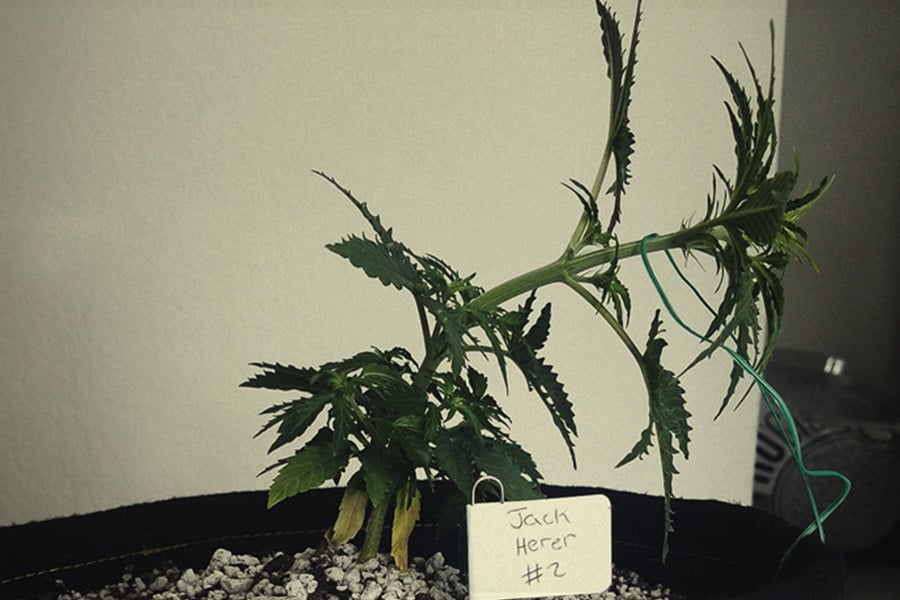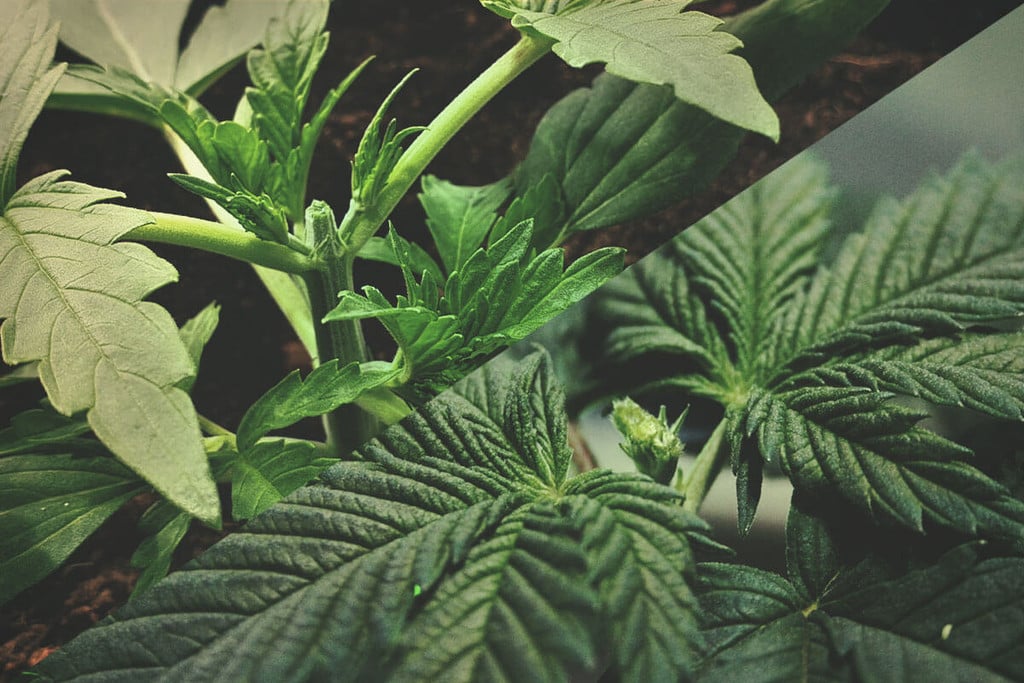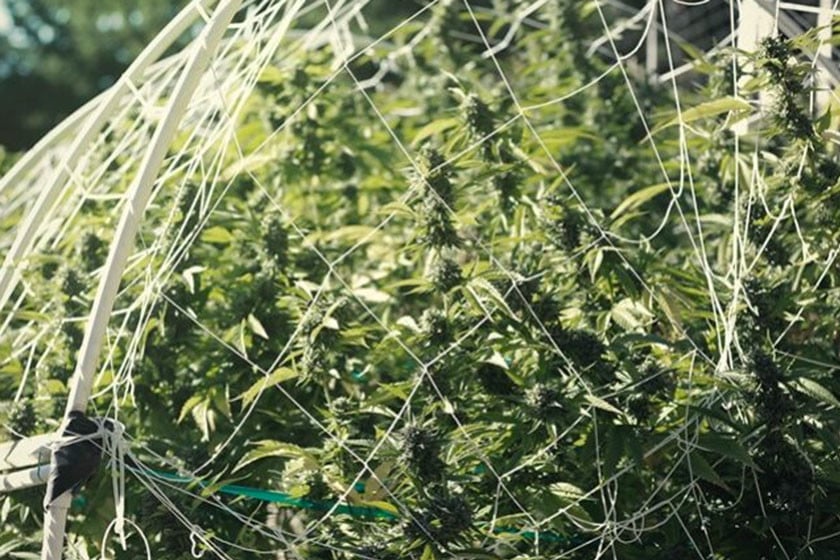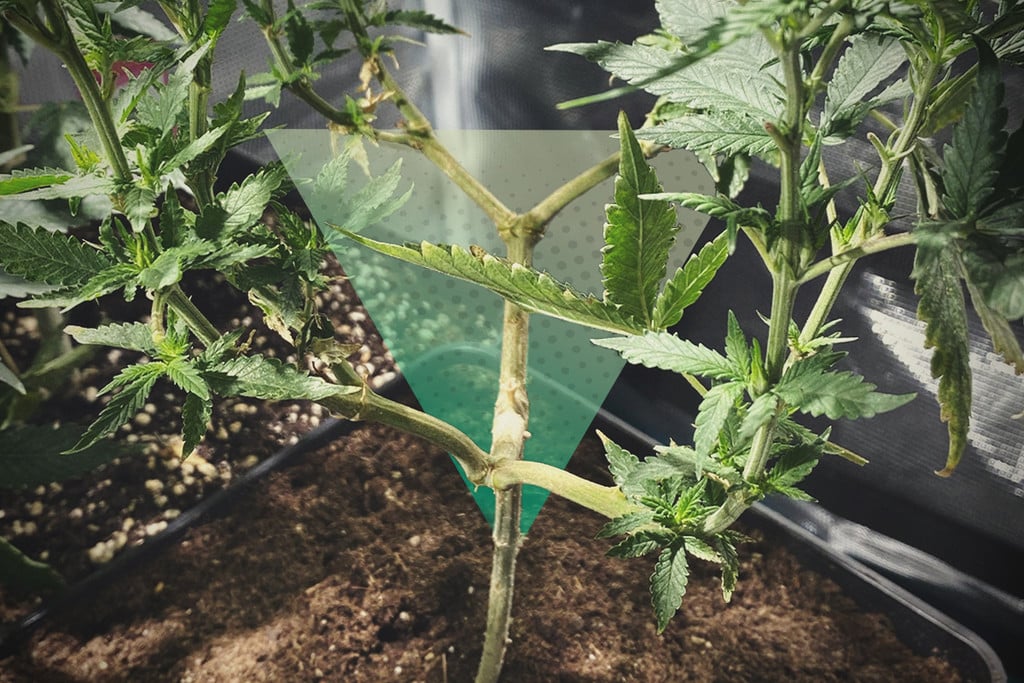.
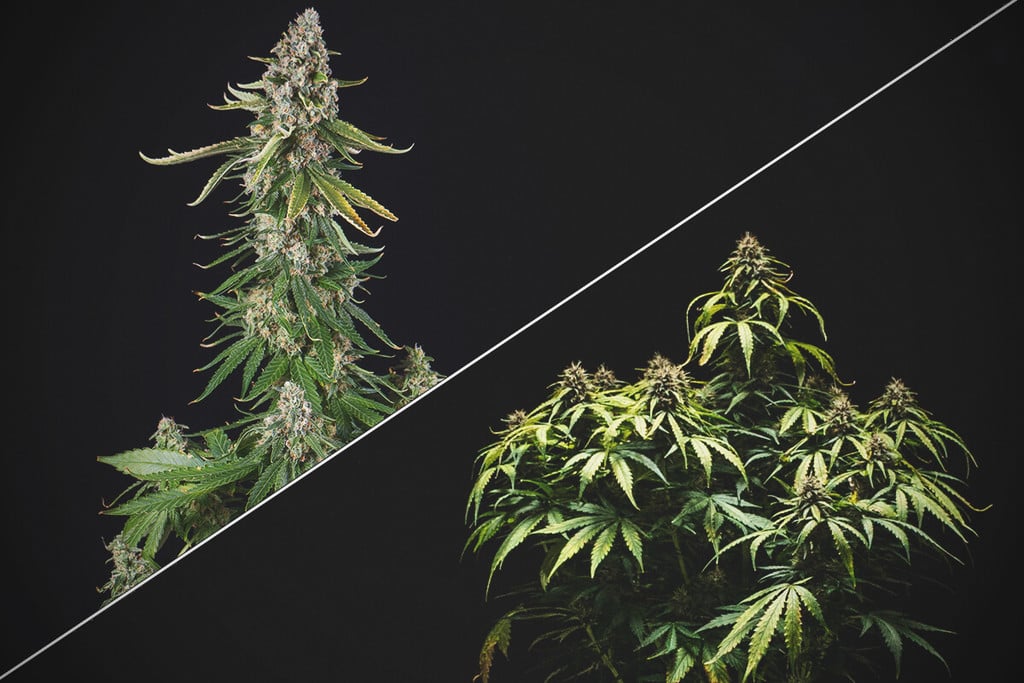
Topped vs Non-Topped Cannabis Plants — Is Topping Worth It?
Topping is a favorite training technique among cannabis growers. But how do topped and non-topped cannabis plants really stack up against each other? Is topping really all it's made out to be? Find out below.
Topping is a popular, time-honoured cannabis plant training method. By cutting the growing tip off of a vegetating plant, topping forces cannabis plants to grow shorter and more compact, and to develop two main branches that will later become covered with flowers. On the other hand, non-topped plants grow taller and faster because they don't suffer from the intense stress and vertical limitation of being topped.
Contents:
What Is Topping?
Topping is a high-stress cannabis training technique. It is typically performed very early on in the vegetative stage, and involves using shears or a razor blade to cut off a plant's growing tip. Besides forcing the plant to develop two main stems, topping encourages plants to direct their energy to lower regions of their anatomy. This results in shorter, bushier growth, rather than the apical growth typically exhibited by non-topped plants.
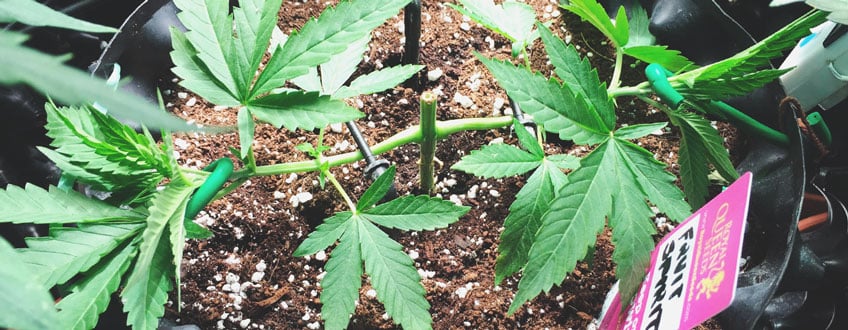
How to Top Cannabis Plants
Before topping a cannabis plant, you must first select a healthy specimen. Topping is a form of high-stress training and should only be performed on plants that are free of pests, diseases, nutrient deficiencies, and other signs of ill health. You should also choose specimens of the appropriate age—the technique works best with those that are 3–4 weeks into the vegetative phase and possess 4–6 nodes or true leaves.
1. Gather and Sterilize Your Tools
Start by grabbing a pair of sharp pruning shears—dull blades can crush stems instead of cutting them. Sterilize your shears with rubbing alcohol and wipe them down before making the cut.
2. Identify the Growth Tip (Apical Node)
Next, you’ll need a basic knowledge of cannabis anatomy to make the best cut. The apical node refers to new growth at the tip of the main stem. Here, you’ll come across soft, light-green tissue.
3. Choose Where to Cut
With the apical node in mind, you’ll want to cut slightly lower down the main stem—but not too low. Use your sterile pruning shears to make a cut between the 4th and 5th node. Cut any higher and you’ll reduce the effectiveness of the technique, whereas cutting lower will remove too much tissue and potentially stunt growth.
4. Make a Clean Cut
After deciding on where to cut, you’ll need to work with precision. Snip the stem in one clean motion. Avoid squeezing or tearing the stem—this can predispose it to infection.
5. Allow Recovery
After topping, your plants will require 7–14 days to recover fully. During this time, focus on providing optimal care. Run your normal light cycle, water consistently when the top 1–2 inches of soil becomes dry, continue feeding with appropriate nutrients, and provide good airflow.
6. Monitor Growth and Consider Secondary Topping
In the days following topping, you’ll notice two new shoots start to form where the original tip was removed—these will become the main colas going forward. Once each new branch grows 2–3 nodes, experienced growers often top again to produce even more main colas, creating a fuller canopy.
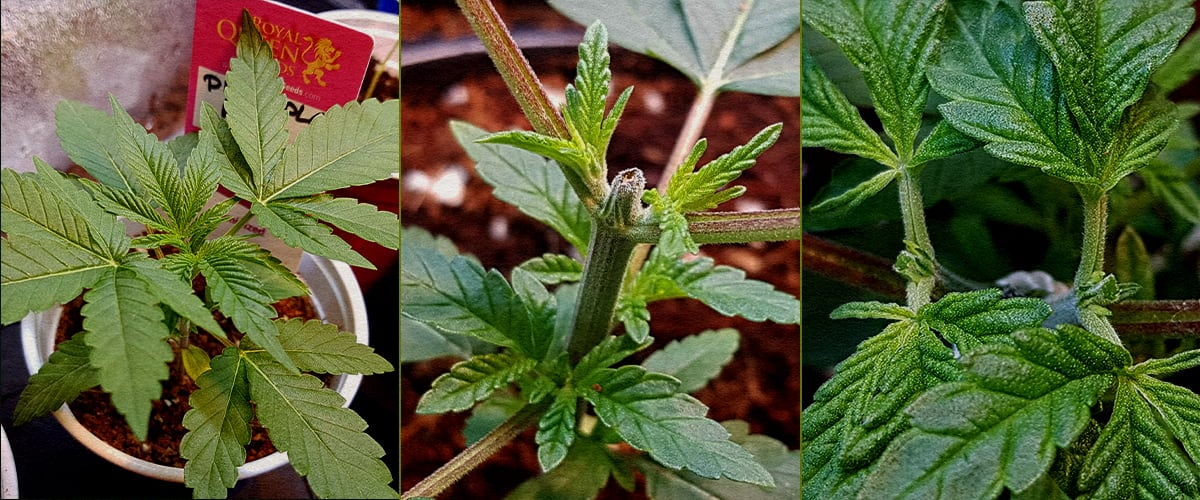
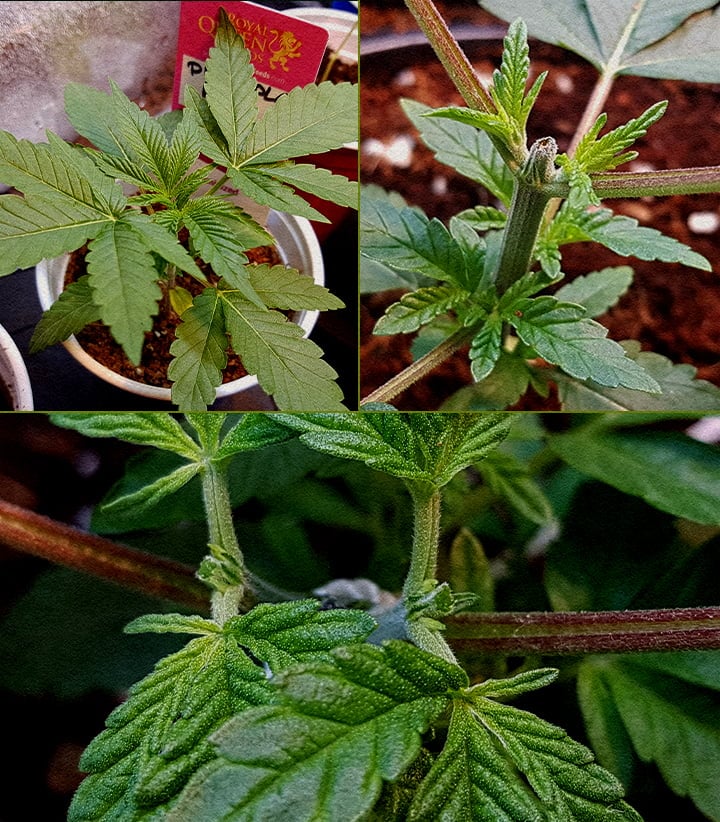
Differences Between Topped vs Non-Topped Cannabis Plants
Topping exerts a lot of stress on cannabis plants. Indeed, taking a pair of scissors to the tip of a healthy plant can seem counterintuitive and daunting to inexperienced growers. In fact, even many experienced growers opt to let their plants grow naturally. In what follows, we'll explore some of the key differences between topped vs non-topped cannabis plants to help you decide whether or not to take a blade to your precious plants.
1. Topped vs Non-Topped Weed Plants Grow Very Differently
Cannabis has a natural apical dominance. Therefore, if left untamed, weed plants grow upward rather than outward, and develop a classic Christmas tree-like structure. Non-topped plants tend to develop one strong central stem that grows much taller than the rest of the plant, and becomes laden with flowers during the bloom stage. This dense region of flowers is called a “cola”. Meanwhile, the lower branches of the plant develop lighter foliage and fewer, often smaller flowers.
Topped cannabis plants, on the other hand, grow much bushier. Due to the harsh shock of losing their central growing tip, topped plants are forced to redirect their energy to their lower sections. If you top your plants, expect them to grow shorter and display a more even canopy that allows for better light penetration throughout the plant. A few weeks after topping, you will also see a topped plant's central stem shoot off into two main stems, which will later become colas.
Ready to perfect your canopy control? Download our Pro Growing Guide for expert LST, super-cropping, and defoliation techniques that help you sculpt an even canopy and maximize yields.
Free Advanced
Growing Guide!
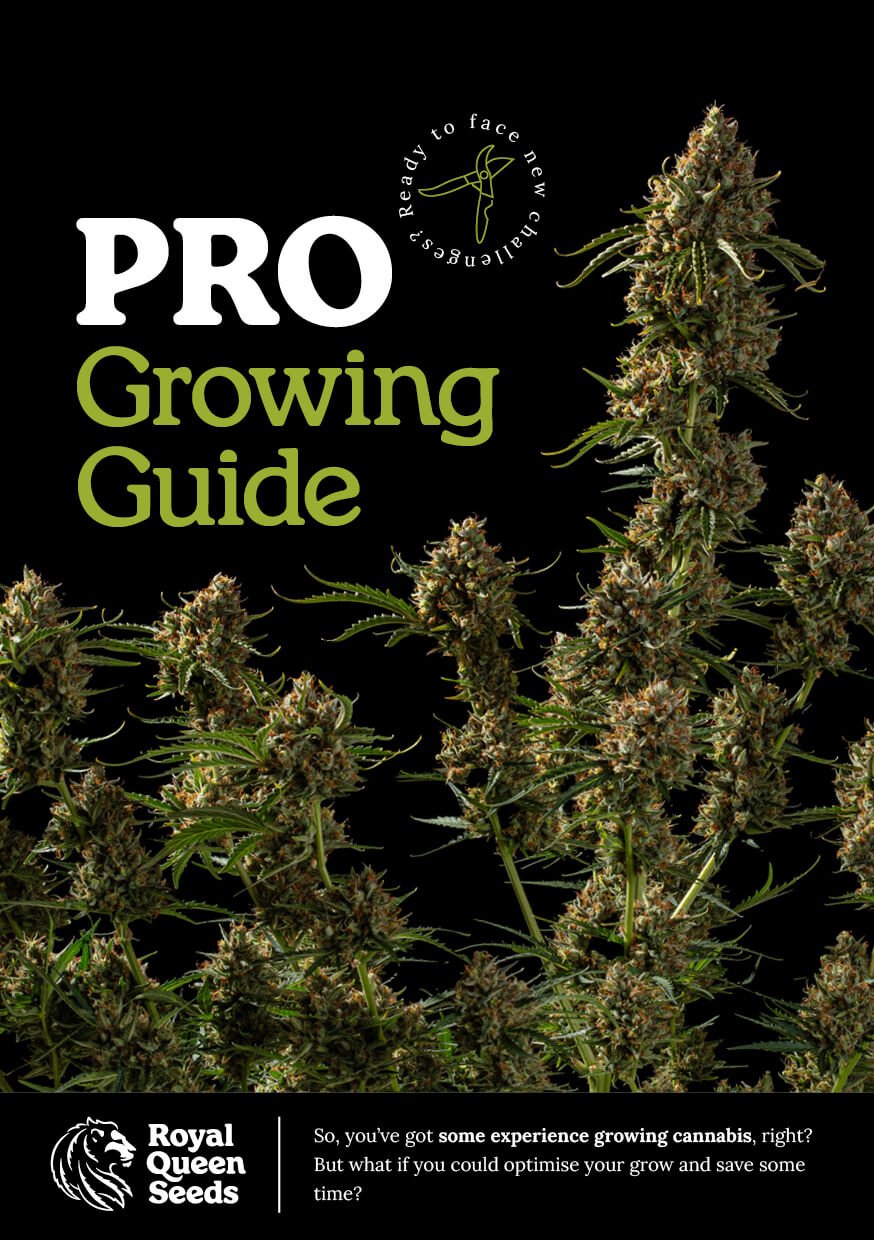
If you plan to top your plants, remember to do so early in the vegetative stage—when plants have developed 3–5 nodes/true leaves. You’ll also need to extend the veg time by a week or more to ensure plants recover from the stress. Moreover, topping creates an open “wound” that exposes the plant to pathogens, and the bushier growth it encourages can cause humidity to build up around the lower sections of a plant. Always use sterilised equipment when topping your plant, and keep an eye on the humidity level as plants become bushier.
2. Topped vs Non-Topped Plants Produce Different Yields
Many growers swear by topping as one of the best ways to improve yields. However, the real effect of topping on cannabis yields isn't so clear.
On the one hand, topping encourages bushier lower growth and the development of multiple colas. However, it also exerts a large amount of stress on young cannabis plants, resulting in slower, stunted growth for at least seven days post-topping.
When plants aren't given sufficient time to recover from the stress of topping, their yields can suffer dramatically. When they do have ample time, however, you may end up with a large harvest of dense, highly resinous flowers (many growers find that HST techniques such as topping promote better resin production).
Non-topped plants that aren’t subjected to significant stress tend to exhibit fast, healthy growth. Granted, these plants produce fewer bud sites on their lower regions and instead focus most of their energy on the dominant cola. In some cases, non-topped plants may produce more buds than topped ones, though some growers argue that flowers from non-topped plants are airier, lighter, and produce less resin. Note, though, that we find this largely comes down to a plant's genetics and the environment in which it is grown.
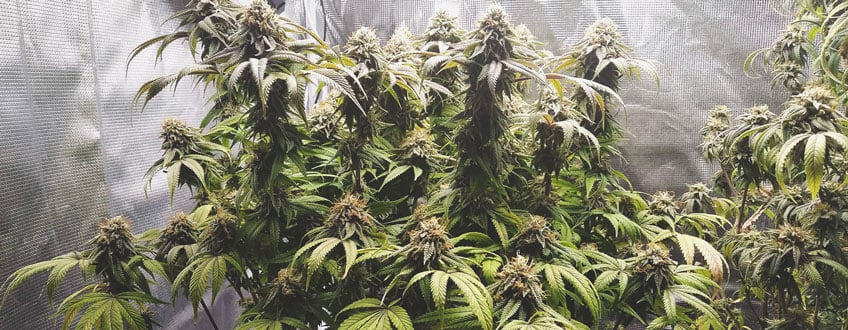
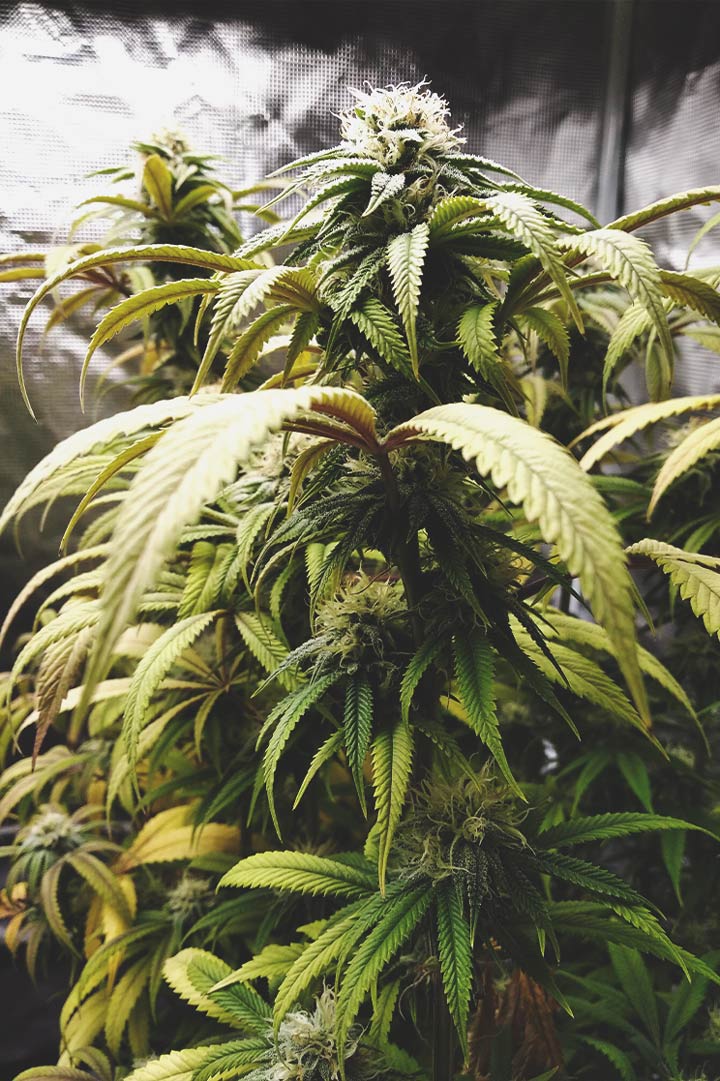
3. The Pros and Cons of Topped vs Non-Topped Cannabis Plants
With all the above in mind, let’s run through a breakdown of the main pros and cons of topped vs non-topped weed plants.
Pros of Topped Plants
- Topped plants develop (at least) two main colas and are able to distribute more energy to their lower bud sites. This can result in a heavier harvest.
- Topped plants stay short and compact—ideal for stealthy outdoor grows, or indoors where space is limited.
- Some growers find that topping promotes resin production.
- Topping reduces cannabis' natural apical dominance, promoting a lower, more even canopy where light can more evenly reach all bud sites.
Cons of Topped Plants
- Topping can be challenging for novice growers.
- Topping creates an open wound on cannabis plants, exposing them to pathogens and bacteria.
- Topping creates bushy plants that can harbour more humidity, which, if not controlled, may promote the development of mold.
- Topping causes intense stress, which causes stunted growth for some time following the cut. This needs to be compensated for with an extended veg time. In situations where growers cannot manually control flowering time (i.e. outdoors), this may affect a plant's size, and potentially its yield too.
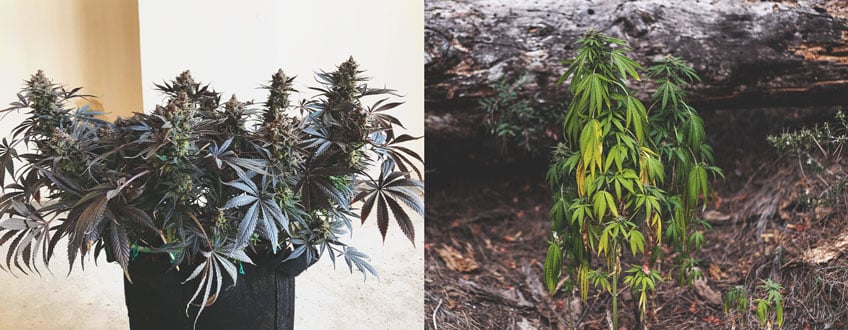
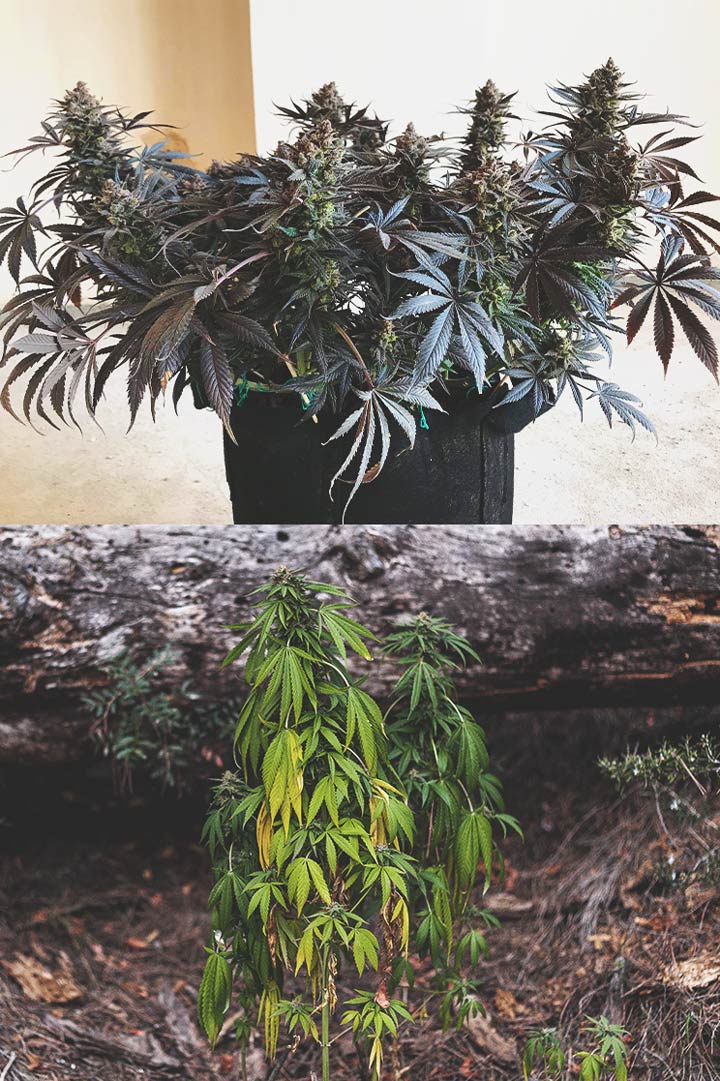
Pros of Non-Topped Plants
- Non-topped plants can be left to grow naturally—this is ideal for novices with little to no experience growing cannabis.
- Non-topped plants develop a strong upper stem that takes up a lot of light and can produce massive and dense flowers.
- Non-topped plants grow quicker and don't need extra veg time before entering the bloom stage.
- Non-topped plants grow taller, which is ideal for growers not concerned about space, or those who need their plants to overgrow other plants in their garden.
Cons of Non-Topped Plants
- Non-topped plants preserve their apical dominance and naturally grow taller. This may be problematic for indoor growers or discreet outdoor growers.
- Non-topped plants focus most of their energy on developing one large cola, producing airy, lighter flowers on their lower branches.
- Non-topped plants may develop an uneven canopy, making it harder for light to reach lower bud sites, further affecting bud development in these areas.
- Non-topped plants may produce less resin and lighter yields.
Does Topping Improve Yields?
One of the main reasons cannabis growers top their plants is in an attempt to improve yields. And in most cases, a topped cannabis plant will produce larger yields than an non-topped plant.
However, it's important to understand that topping doesn't guarantee better yields all on its own. Topping plants and nursing them after they've been topped takes skill and experience, and combining the technique with other forms of training/care is also important.
To make up for the period of stunted growth following topping, most growers compensate for this by extending their plant's veg time (indoors) or topping really early in the season (outdoors). And, of course, growers need to take special care to protect their plants from bacteria and fungi that may enter a plant's system via the cut made when performing the method.
As they recover from being cut, topped plants may also be more sensitive to nutrient imbalances or overwatering. Other, more hardy plants may recover more quickly. As a grower, it's important you're able to read your plants, and know how to care for them accordingly.
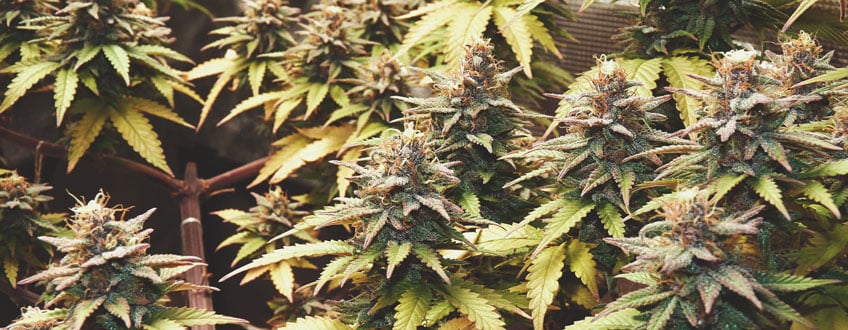
Using Topping Alongside Other Training Techniques
In order to really push a plant's harvest potential, many growers combine topping with other low-stress and/or high-stress training techniques. Some common combinations of topping and other forms of training include:
- Topping and LST: To open up bushy plants and promote better airflow and light penetration.

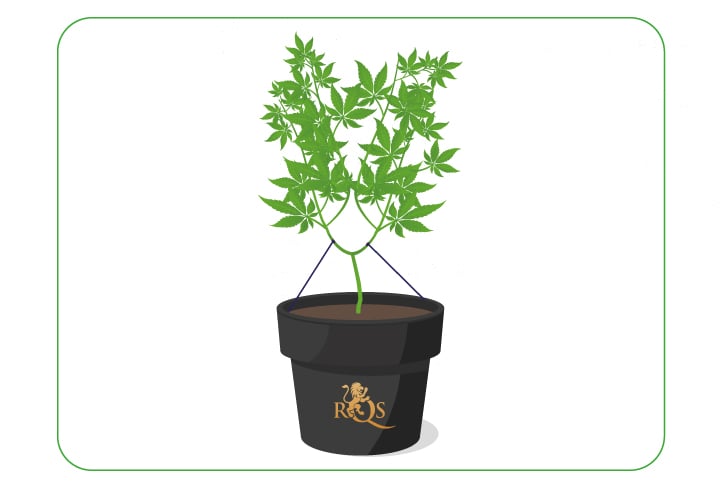
- Topping, main-lining, and lollipopping: To channel a plant's energy to only a few main colas, maximising bud growth in those areas.
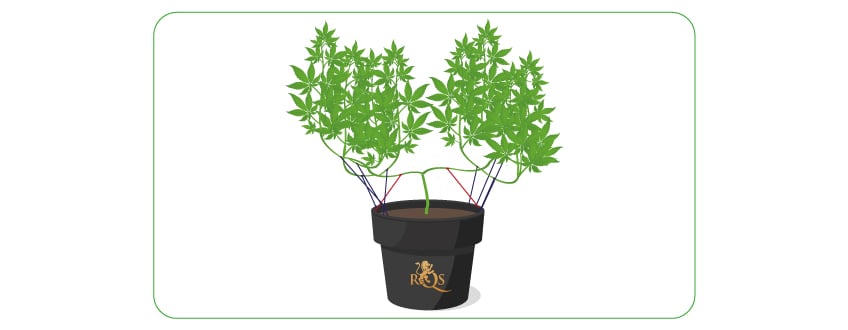
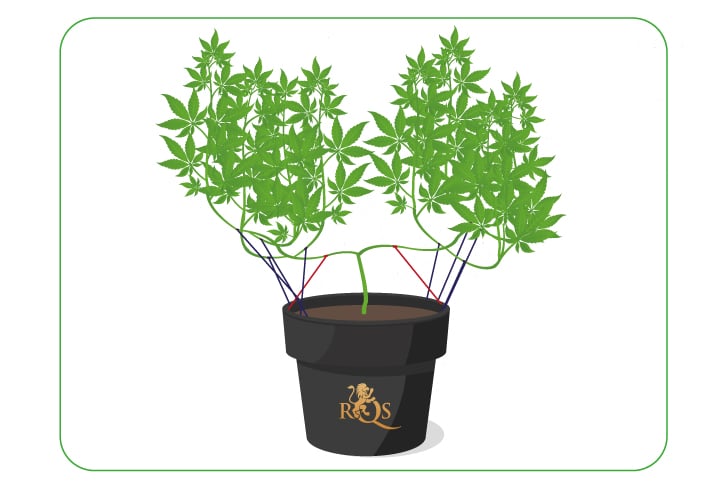
- Topping and super cropping: To open up bushy plants and maximise nutrient and water uptake during the vegetative phase.

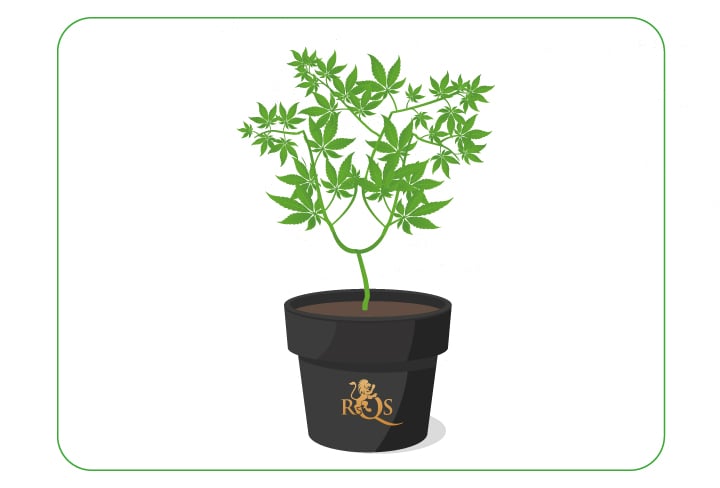
A Note on Topping Cannabis Plants Outdoors
If you're growing outdoors, remember that topping brings with it some unique challenges that may take extra care to manage. As mentioned, topping creates an open wound that can be a target for bacteria and other pathogens—especially outdoors. So take extra precautions to ensure your plant is not under attack.
Also, when growing under the sun, you have no way to artificially extend your plant's veg time. Hence, if you want to top your outdoor cannabis plants, you need to do so early—when plants have about three nodes. Top them too late, and they may not fully recover from the cut before flowering, which can result in stunted growth, poor harvests, and even trigger hermaphroditism in some plants.
A Note for Auto Growers
If you grow autoflowers, we generally recommend that you do not perform high-stress training methods. Though some growers do top their autos, these strains have a very short veg stage of 3–4 weeks, and likely won’t be able to fully recover from the stress of topping before entering the bloom stage.
Is Topping Cannabis Worth It?
Many cannabis growers swear by topping, and for good reason. This high-stress technique has the ability to push cannabis plants to their limit and produce exceptional yields. However, understanding the effect topping has on cannabis plants is crucial, and growers need to be able to read and care for their plants properly after exposing them to this intense form of training. In most cases, topping is best left to experienced growers.


























